In 1825, the well-known lace manufacturer Samuel Hall purchased land in Sherwood. He laid out Sherwood’s first streets, on the east side of Mansfield Road, and sold his land in lots for the first houses to be built. Marshall Street (facing the tram depot site), Mansfield Street and Hood Street are roads named by Hall. Nearby Hall Street is named after him also.
A plaque documenting the history of The Samuel Hall.
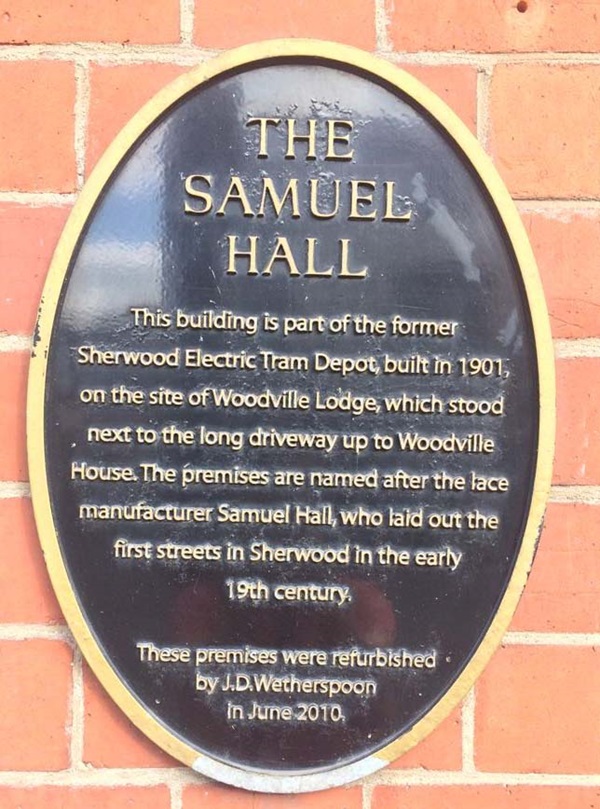
The text reads: This building is part of the former Sherwood Electric Tram Depot, built in 1901, on the site of Woodville Lodge, which stood next to the long driveway up to Woodville House. The premises are named after the lace manufacture Samuel Hall, who laid out the first streets in Sherwood in the early 19th century.
These premises were refurbished by J D Wetherspoon in June 2010.
Photographs and text about The Samuel Hall.
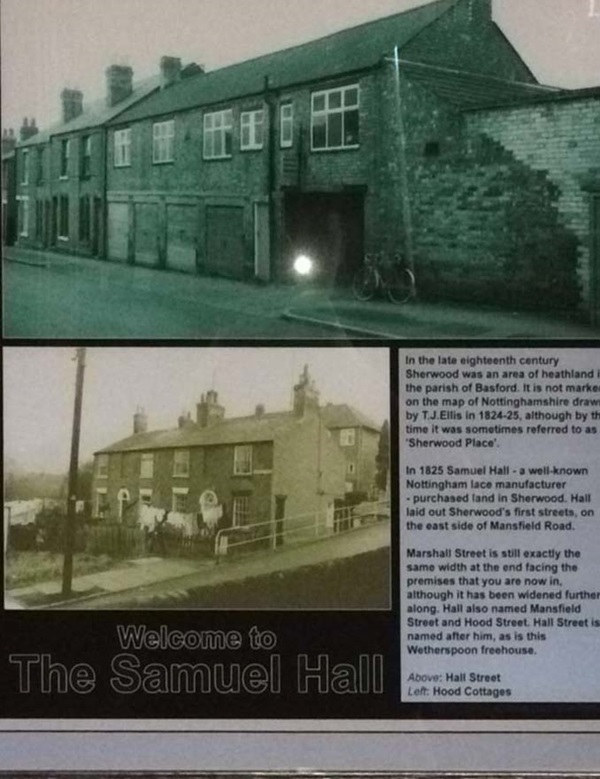
The text reads: In the late eighteenth century Sherwood was an area of heathland in the parish of Basford. It is not marked on the map of Nottinghamshire drawn by TJ Ellis in 1824-25, although by that time it was sometimes referred to as Sherwood Place.
In 1825 Samuel Hall – a well-known Nottingham lace manufacturer – purchased land in Sherwood. Hall laid out Sherwood’s first streets, on the east side of Mansfield Road.
Marshall Street is still exactly the same width at the end facing the premises that you are now in, although it has been widened further along. Hall also named Mansfield Street and Hood Street. Hall Street is named after him, as is this Wetherspoon freehouse.
Above: Hall Street
Left: Hood Cottages.
Text about Mansfield Road.
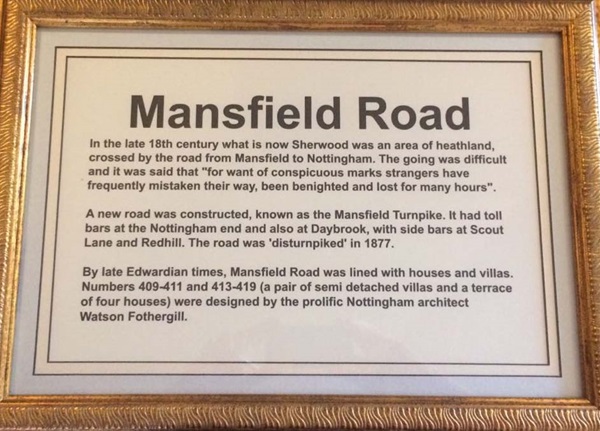
The text reads: In the late 18th century what is now Sherwood was an area of Heathland, crossed by the road from Mansfield to Nottingham. The going was difficult and it was said that “for want of conspicuous marks strangers have frequently mistaken their way, been benighted and lost for many hours”.
A new road was constructed, known as the Mansfield Turnpike. It had toll bars at the Nottingham end and also at Daybrook, with side bars at Scout Lane and Redhill. The road was ‘disturnpiked’ in 1877.
By late Edwardian times, Mansfield Road was lined with houses and villas. Numbers 409-411 and 413-419 (a pair of semi-detached villas and a terrace of fur houses) were designed by the prolific Nottingham architect Watson Fothergill.
A photograph of the interior of the Sherwood Tram Depot, with maintenance workers, 1901.
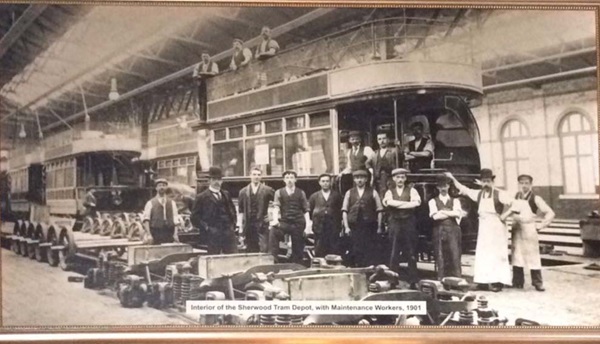
A photograph looking towards Woodbury’s Sherwood Bus Depot.
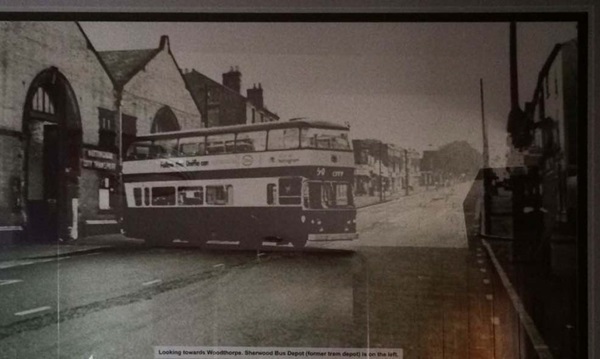
A photograph of the east side of Mansfield Road, facing the Tram Depot, 1912.
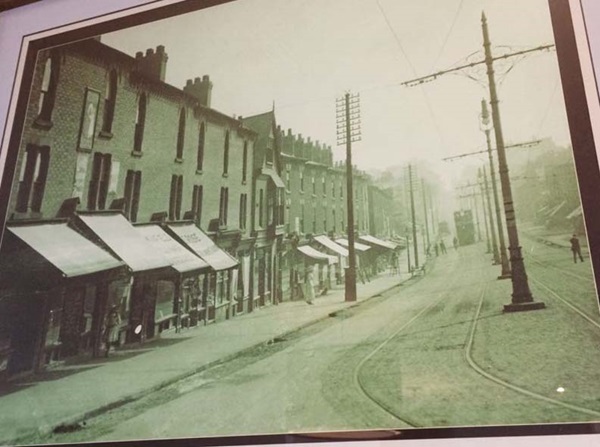
External photograph of the building – main entrance.
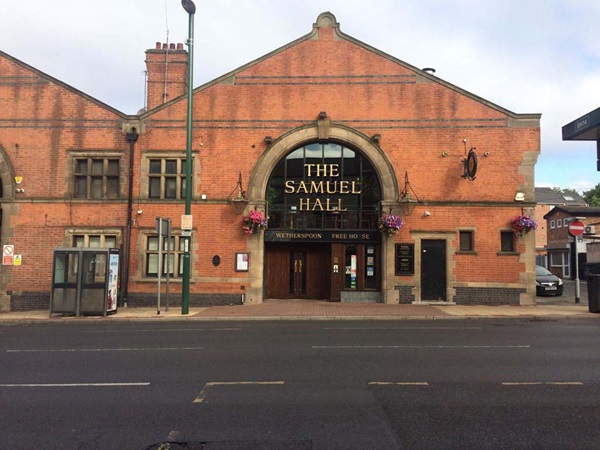
If you have information on the history of this pub, then we’d like you to share it with us. Please e-mail all information to: pubhistories@jdwetherspoon.co.uk